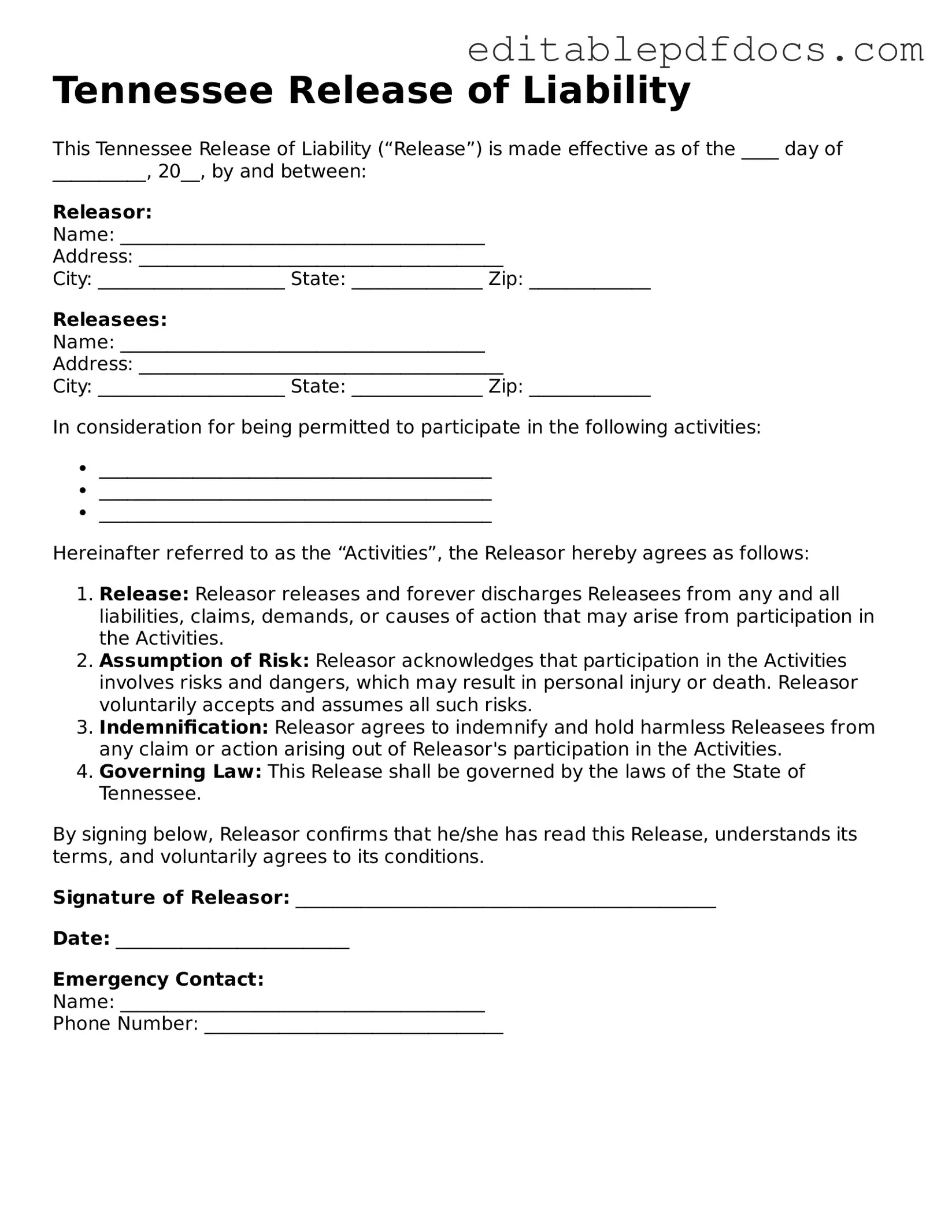When filling out the Tennessee Release of Liability form, many people overlook crucial details that can affect the validity of the document. One common mistake is failing to read the entire form before signing. This oversight can lead to misunderstandings about the rights being waived and the responsibilities being accepted. It's essential to understand what you are agreeing to, as the release can have significant legal implications.
Another frequent error is not providing accurate information. Individuals might rush through the process and input incorrect names, dates, or contact information. Such inaccuracies can create confusion later, especially if a dispute arises. Ensuring that all details are correct is vital for the form to be enforceable.
Some people forget to include all relevant parties involved in the activity. If the form is meant to protect multiple individuals or organizations, failing to list them can leave gaps in liability coverage. It’s important to identify everyone who may be affected by the release to ensure comprehensive protection.
Many individuals also neglect to consider the timing of the form's completion. Filling out the release after an incident has occurred can render it ineffective. The timing of signing the form matters because it should ideally be completed before any potential risks are taken. This proactive approach helps establish a clear understanding of the risks involved.
Another common mistake is not having the form witnessed or notarized when required. While not all releases need this, some situations do. A lack of proper witnessing can lead to questions about the authenticity of the signatures. In situations where the form is challenged, having a witness can provide additional credibility.
Finally, people often forget to keep a copy of the signed form. After all the effort of filling it out correctly, not retaining a copy can lead to problems later. If questions arise or disputes occur, having access to the original document can be crucial. Always make sure to keep a copy for your records, as it serves as proof of the agreement.
